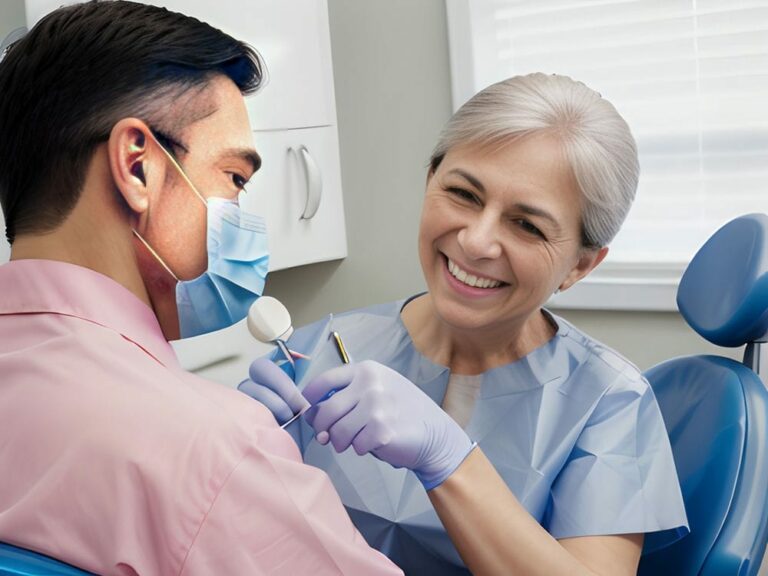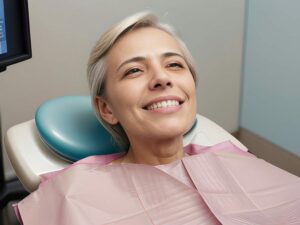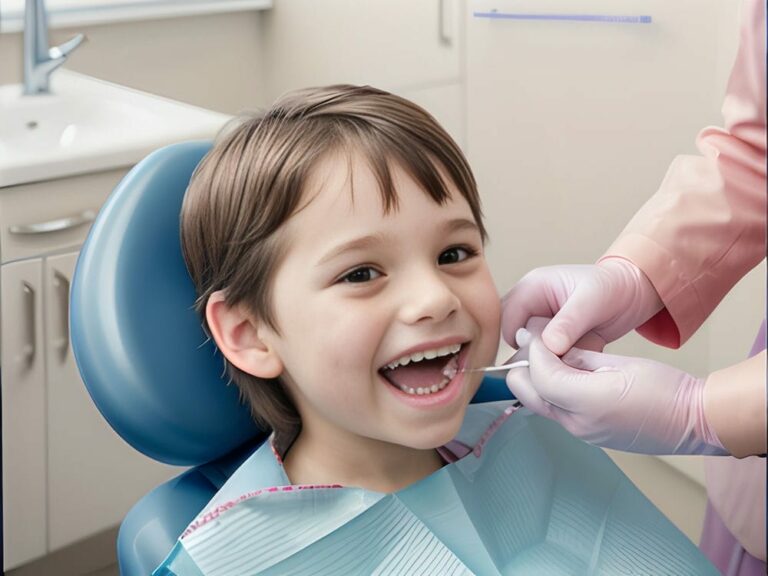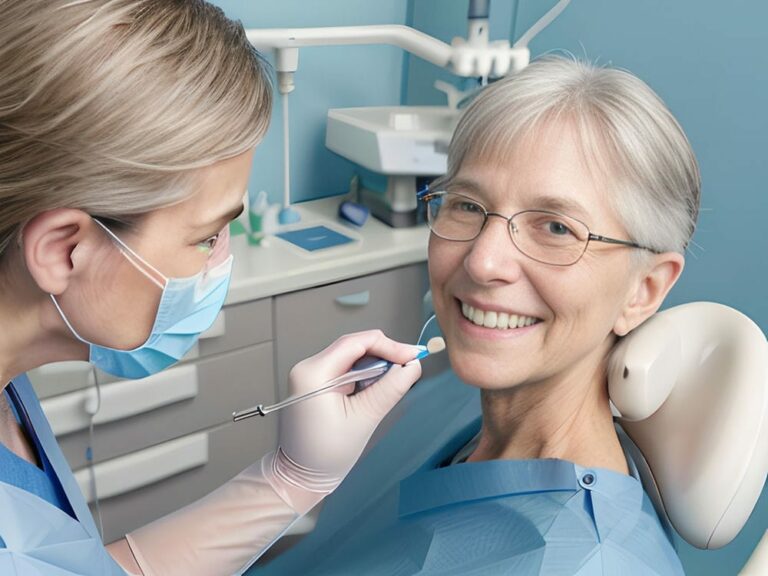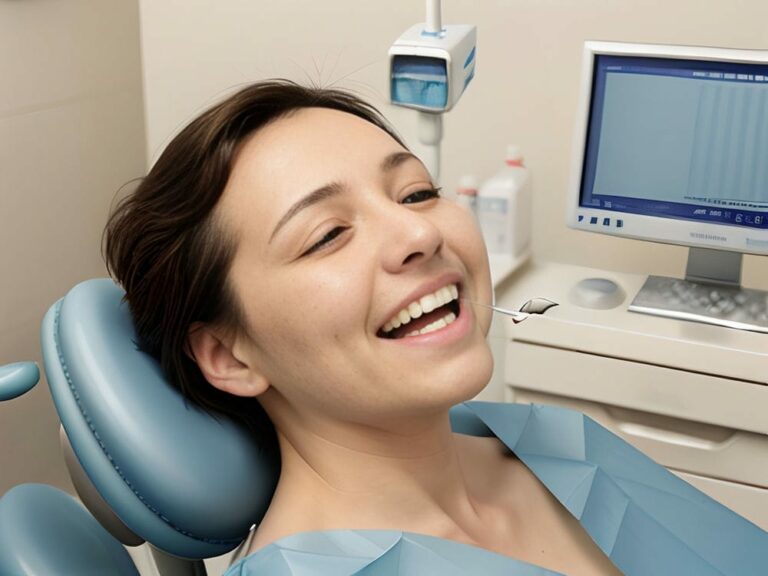The Role of Regenerative Medicine in Dental Care Practices
The field of regenerative medicine has made significant advancements in recent years, revolutionizing dental care practices. This innovative approach focuses on using the body’s natural healing processes to regenerate and repair damaged tissues, including those in the oral cavity. The role of regenerative medicine in dental care practices is multi-faceted, encompassing various treatments such as periodontal regeneration and tooth regeneration.
Periodontal regeneration is a key area where regenerative medicine has shown great promise. Periodontal disease, which affects the supporting structures of the teeth, can lead to gum recession, bone loss, and ultimately tooth loss. Traditional treatment methods often involve surgical intervention and grafting procedures. However, regenerative therapies offer a less invasive and more effective alternative. By utilizing growth factors and stem cells derived from the patient’s own body or other sources, these therapies stimulate the regeneration of lost tissue and promote healing. This not only helps restore gum health but also facilitates the reattachment of teeth to their supporting structures.
Tooth regeneration is another exciting application of regenerative medicine in dental care. Lost or damaged teeth have traditionally been replaced with artificial prosthetics such as dentures or dental implants. While these solutions are effective, they do not replicate the natural structure and functionality of real teeth. Regenerative medicine aims to change that by developing techniques to grow new teeth using a patient’s own cells or stem cells from other sources. Scientists are exploring different approaches, including tissue engineering and bio-activators, to stimulate tooth formation and restore fully functional teeth without resorting to artificial replacements.
Regenerative therapies hold immense potential in transforming dental care practices by providing minimally invasive treatments that promote natural healing processes within the oral cavity. As research continues to advance in this field, we can expect further breakthroughs that will revolutionize how we approach dental health issues. From periodontal regeneration to tooth restoration, regenerative medicine offers hope for patients seeking more effective and long-lasting solutions to their dental problems. By harnessing the body’s innate regenerative capacity, dentists can now provide treatments that not only improve oral health but also enhance overall well-being.
Harnessing the Power of Stem Cells for Dental Regeneration
Regenerative medicine has emerged as a game-changer in dental care practices, offering new possibilities for treating oral health issues. One area where regenerative medicine is making significant strides is in the field of periodontal regeneration. Periodontal disease can cause gum recession, bone loss, and even tooth loss. Traditional treatments often involve surgery and grafting procedures. However, regenerative therapies provide a less invasive and more effective alternative by utilizing growth factors and stem cells to stimulate tissue regeneration and promote healing. This approach not only restores gum health but also facilitates the reattachment of teeth to their supporting structures.
Another exciting application of regenerative medicine in dental care is tooth regeneration. While artificial prosthetics like dentures or dental implants have been effective in replacing lost or damaged teeth, they do not fully replicate the natural structure and functionality of real teeth. Regenerative medicine aims to change this by developing techniques to grow new teeth using a patient’s own cells or stem cells from other sources. Scientists are exploring different approaches such as tissue engineering and bio-activators to stimulate tooth formation and restore fully functional teeth without relying on artificial replacements.
The potential of regenerative therapies in transforming dental care practices is immense. These minimally invasive treatments harness the body’s innate regenerative capacity to promote natural healing processes within the oral cavity. Ongoing dental research focused on harnessing the power of stem cells holds great promise in driving further breakthroughs in this field. By leveraging stem cells for dental regeneration, dentists can provide patients with more effective and long-lasting solutions for their dental health issues, ultimately improving overall well-being.
This guide has explored how regenerative medicine is revolutionizing dental care practices, particularly in the areas of periodontal regeneration and tooth restoration. By utilizing the body’s natural healing processes through growth factors and stem cells, dentists can provide minimally invasive treatments that promote tissue regeneration and facilitate long-term oral health improvements. Ongoing research into stem cell therapies further enhances the potential for transformative advancements in dental care. As regenerative medicine continues to advance, patients can look forward to more innovative and effective approaches to addressing their dental health concerns.
Tissue Engineering: A Breakthrough in Dental Restoration
Regenerative medicine has brought about a revolution in dental care practices, offering new possibilities for treating oral health issues. One area where regenerative medicine is making significant strides is in periodontal regeneration, which involves the regeneration of gum tissue and supporting structures. Traditional treatments for periodontal disease often involve surgery and grafting procedures, which can be invasive and have limited success rates. However, regenerative therapies provide a less invasive and more effective alternative by utilizing growth factors and stem cells to stimulate tissue regeneration and promote healing.
Another exciting application of regenerative medicine in dental care is tooth regeneration. While artificial prosthetics like dentures or dental implants have been effective in replacing lost or damaged teeth, they do not fully replicate the natural structure and functionality of real teeth. Regenerative medicine aims to change this by developing techniques to grow new teeth using a patient’s own cells or stem cells from other sources. This approach holds great promise in restoring fully functional teeth without relying on artificial replacements.
The potential of regenerative therapies in transforming dental care practices is immense. By harnessing the body’s innate regenerative capacity through growth factors and stem cells, dentists can provide minimally invasive treatments that promote natural healing processes within the oral cavity. Ongoing research focused on biomaterials, dental technology, and dental procedures further enhances the potential for transformative advancements in dental care. As regenerative medicine continues to advance, patients can look forward to more innovative and effective approaches to addressing their dental health concerns without invasive surgeries or artificial replacements.
In summary, regenerative medicine has emerged as a game-changer in dental care practices. By utilizing growth factors and stem cells for periodontal regeneration and tooth restoration, dentists can provide patients with less invasive yet highly effective treatments that promote natural healing processes within the oral cavity. Ongoing research into biomaterials, dental technology, and procedures further enhances the potential for transformative advancements in this field. With these advancements, patients can expect more innovative and long-lasting solutions for their dental health issues, ultimately improving their overall well-being.
Advancements in Dental Implants through Regenerative Techniques
Regenerative medicine is revolutionizing dental care practices by providing new possibilities for treating oral health issues. One area where regenerative medicine is making significant strides is in periodontal regeneration, which involves the regeneration of gum tissue and supporting structures. Traditional treatments for periodontal disease often involve surgery and grafting procedures, which can be invasive and have limited success rates. However, regenerative therapies offer a less invasive and more effective alternative by utilizing growth factors and stem cells to stimulate tissue regeneration and promote healing.
Another exciting application of regenerative medicine in dental care is tooth regeneration. While artificial prosthetics like dentures or dental implants have been effective in replacing lost or damaged teeth, they do not fully replicate the natural structure and functionality of real teeth. Regenerative medicine aims to change this by developing techniques to grow new teeth using a patient’s own cells or stem cells from other sources. This approach holds great promise in restoring fully functional teeth without relying on artificial replacements.
The potential of regenerative therapies in transforming dental care practices is immense. By harnessing the body’s innate regenerative capacity through growth factors and stem cells, dentists can provide minimally invasive treatments that promote natural healing processes within the oral cavity. Ongoing research focused on biomaterials, dental technology, and dental procedures further enhances the potential for transformative advancements in dental care.
With these advancements, patients can expect more innovative and long-lasting solutions for their dental health issues, ultimately improving their overall well-being. Regenerative medicine offers a promising avenue for tissue regeneration and dental restoration, providing less invasive options for addressing oral health concerns. By harnessing the body’s own healing abilities through growth factors and stem cells, dentists can revolutionize dental care practices and provide patients with highly effective treatments that promote natural healing processes within the oral cavity. Ongoing research will continue to drive advancements in biomaterials, dental technology, and procedures, leading to further transformative breakthroughs in this field.
Promoting Bone Regeneration with Regenerative Dentistry
Regenerative dentistry, a branch of regenerative medicine, is revolutionizing dental care practices by offering innovative solutions for promoting bone regeneration. Dental innovations in this field have the potential to transform traditional dental treatments and provide patients with more effective and long-lasting results.
One area where regenerative dentistry is making significant progress is in promoting bone regeneration. Traditional dental treatments for bone loss often involve grafting procedures or the use of synthetic materials. However, regenerative dentistry utilizes growth factors and stem cells to stimulate the body’s natural healing processes and promote the regeneration of bone tissue. This approach offers a less invasive and more successful alternative to traditional methods, providing patients with improved outcomes.
These advancements in regenerative dentistry open up new possibilities for dental treatments that were previously considered challenging or impossible. For example, dental implants can now be placed in areas with inadequate bone structure by utilizing regenerative techniques to promote bone growth. This not only enhances the success rate of implant procedures but also allows patients who were previously ineligible for implants to benefit from this treatment option.
Dental professionals are continuously exploring and developing new techniques and technologies in regenerative dentistry to further improve patient outcomes. The ongoing research in biomaterials, dental technology, and procedures will continue to drive advancements in this field, leading to even more transformative breakthroughs in dental care.
By embracing regenerative dentistry, dental practitioners can provide patients with highly effective treatments that promote natural healing processes within their oral cavity. These innovative approaches offer less invasive options for addressing oral health concerns and have the potential to significantly enhance the overall well-being of patients.
Therefore, it can be concluded that regenerative dentistry is transforming dental care practices by offering advanced solutions for promoting bone regeneration and improving patient outcomes. With ongoing research and advancements in this field, patients can expect even more innovative and effective dental treatments in the future.
Unleashing the Potential of Growth Factors in Dental Treatments
Regenerative dentistry is revolutionizing dental care practices by utilizing regenerative techniques to promote natural healing processes within the oral cavity. One key component of this approach is the use of growth factors, which play a crucial role in promoting tissue regeneration and repair.
Growth factors are naturally occurring proteins that regulate cell growth and development. In dental treatments, these growth factors can be used to stimulate the body’s own cells to regenerate damaged or lost tissues. By applying growth factors directly to the affected area, dental professionals can enhance the healing process and promote the regeneration of bone and soft tissues.
The use of growth factors in dental treatments offers several advantages over traditional methods. Firstly, it eliminates the need for invasive procedures such as bone grafting or synthetic materials, reducing patient discomfort and recovery time. Secondly, it allows for more targeted treatment, as the growth factors can be applied directly to the site that requires regeneration. Lastly, using natural growth factors promotes a more biocompatible response in the body, leading to better integration and long-term success of dental treatments.
Dental professionals are continually exploring new ways to harness the potential of growth factors in dental care. Ongoing research is focused on developing innovative delivery systems for growth factor application and studying their effects on different types of tissues in the oral cavity. Additionally, advancements in dental materials are being made to optimize their interaction with growth factors and enhance their regenerative properties.
Incorporating regenerative techniques and utilizing growth factors in dental treatments holds great promise for improving patient outcomes and transforming traditional dental care practices. As further research continues to uncover new applications and benefits of these approaches, patients can expect even more effective and personalized treatment options that promote natural healing processes within their oral cavity.
Integrating Regenerative Medicine into Routine Dental Procedures
Dental advancements have paved the way for regenerative solutions to be integrated into routine dental procedures. This innovative approach utilizes regenerative techniques and growth factors to promote natural healing processes within the oral cavity. By incorporating these regenerative solutions, dental professionals can enhance patient outcomes and transform traditional dental care practices.
One major benefit of integrating regenerative medicine into routine dental procedures is the ability to stimulate tissue regeneration and repair. By utilizing growth factors, dental professionals can promote the body’s own cells to regenerate damaged or lost tissues. This eliminates the need for invasive procedures such as bone grafting or synthetic materials, reducing patient discomfort and recovery time.
Furthermore, incorporating regenerative techniques allows for more targeted treatment. Growth factors can be applied directly to the specific site that requires regeneration, promoting a more efficient healing process. This personalized approach ensures that patients receive optimal care tailored to their individual needs.
By embracing regenerative medicine in routine dental procedures, dental professionals are revolutionizing how oral health issues are treated. Research and development in this field continue to uncover new applications and benefits of these approaches, leading to even more effective and personalized treatment options. With ongoing advancements in dental materials and delivery systems for growth factor application, patients can expect improved outcomes and a transformation of traditional dental care practices.
Incorporating regenerative solutions into routine dental procedures has revolutionized dental care practices by harnessing the power of growth factors and promoting natural healing processes within the oral cavity. These advancements offer numerous advantages over traditional methods, including reduced invasiveness, targeted treatment, and enhanced integration with the body. As research continues to advance this field, patients can look forward to even more effective and personalized treatments that optimize their oral health outcomes.
The Future of Dentistry: Transforming Dental Care with Regenerative Techniques
Regenerative medicine is making significant strides in revolutionizing dental care practices. This innovative approach utilizes regenerative techniques and growth factors to promote natural healing processes within the oral cavity. By integrating these regenerative solutions into routine dental procedures, dentists and patients can experience numerous benefits.
Firstly, the integration of regenerative medicine allows for the stimulation of tissue regeneration and repair. Growth factors are used to promote the body’s own cells to regenerate damaged or lost tissues, eliminating the need for invasive procedures like bone grafting or synthetic materials. This not only reduces patient discomfort but also shortens recovery time.
Moreover, incorporating regenerative techniques enables more targeted treatment. With the ability to apply growth factors directly to specific sites that require regeneration, dental professionals can facilitate a more efficient healing process. This personalized approach ensures that patients receive optimal care tailored to their individual needs.
By embracing regenerative medicine in routine dental procedures, dental professionals are transforming traditional dental care practices. Ongoing research and development in this field continue to uncover new applications and benefits of regenerative techniques, leading to even more effective and personalized treatment options. With advancements in dental materials and delivery systems for growth factor application, patients can expect improved outcomes and a significant transformation of how oral health issues are treated.
Incorporating regenerative solutions into routine dental procedures has led to groundbreaking advancements in dental care practices. By harnessing the power of growth factors and promoting natural healing processes within the oral cavity, these techniques offer numerous advantages over traditional methods. As research continues to advance this field, patients can look forward to even more effective and personalized treatments that optimize their oral health outcomes.
Case Studies: Real-Life Examples of Successful Regenerative Dental Treatments
Regenerative medicine has revolutionized dental care practices by utilizing regenerative techniques and growth factors to promote natural healing processes within the oral cavity. This approach eliminates the need for invasive procedures like bone grafting or synthetic materials, reducing patient discomfort and shortening recovery time. By stimulating tissue regeneration and repair, regenerative medicine allows for more targeted treatment, as growth factors can be applied directly to specific sites that require regeneration.
The integration of regenerative techniques in routine dental procedures has transformed traditional dental care practices. Ongoing research and development in this field continue to uncover new applications and benefits of regenerative medicine, leading to even more effective and personalized treatment options. With advancements in dental materials and delivery systems for growth factor application, patients can expect improved outcomes and a significant transformation in how oral health issues are treated.
By harnessing the power of growth factors and promoting natural healing processes, regenerative medicine offers numerous advantages over traditional methods. As research advances in this field, patients can look forward to even more effective and personalized treatments that optimize their oral health outcomes. The future of dentistry is bright with the continued integration of regenerative techniques into routine dental care practices.
Exploring the Limitless Possibilities of Regenerative Dentistry
Regenerative dentistry holds immense potential in revolutionizing dental care practices. By utilizing regenerative techniques and growth factors, this field aims to promote natural healing processes within the oral cavity, eliminating the need for invasive procedures and synthetic materials. This approach not only reduces patient discomfort but also shortens recovery time.
One of the significant benefits of regenerative dentistry is its ability to stimulate tissue regeneration and repair. Growth factors can be applied directly to specific sites that require regeneration, allowing for more targeted treatment. This means that dentists can focus on addressing the root cause of oral health issues rather than just treating their symptoms. By harnessing the power of growth factors, regenerative dentistry offers a more effective and personalized approach to dental care.
Ongoing research and development in regenerative dentistry continue to uncover new applications and benefits. Advancements in dental materials and delivery systems for growth factor application further enhance the effectiveness of regenerative treatments. As a result, patients can expect improved outcomes and a significant transformation in how oral health issues are treated.
The future of dentistry looks promising with the continued integration of regenerative techniques into routine dental care practices. With advancements in technology and our growing understanding of regenerative medicine, we can anticipate even more innovative and personalized treatments that optimize oral health outcomes. Regenerative dentistry has the potential to revolutionize the way we approach dental care, providing patients with better outcomes and a brighter future for their oral health.
FAQs
Q: What is regenerative medicine?,
A: Regenerative medicine is a branch of medicine that focuses on using the body’s natural healing processes to restore and repair damaged tissues and organs.,
Q: How is regenerative medicine revolutionizing dental care practices?,
A: Regenerative medicine is revolutionizing dental care practices by offering innovative treatments that can regenerate and restore damaged oral tissues, such as gums and teeth.,
Q: What are some examples of regenerative medicine techniques used in dental care?,
A: Some examples of regenerative medicine techniques used in dental care include platelet-rich plasma therapy, stem cell therapy, and tissue engineering.,
Q: How does platelet-rich plasma therapy work in dental care?,
A: Platelet-rich plasma therapy involves using a patient’s own blood platelets, which are rich in growth factors, to stimulate the healing and regeneration of oral tissues.,
Q: What role do stem cells play in regenerative dentistry?,
A: Stem cells have the unique ability to differentiate into various cell types, making them valuable in regenerative dentistry for repairing and regenerating damaged oral tissues.,
Q: Can regenerative medicine be used to replace missing teeth?,
A: Yes, regenerative medicine offers techniques such as tissue engineering and dental implants that can be used to replace missing teeth and restore oral function.,
Q: Are regenerative medicine treatments in dental care safe?,
A: Yes, regenerative medicine treatments in dental care are generally considered safe. However, it is essential to consult with a qualified dental professional to determine the most suitable treatment option.,
Q: How long does it take to see results from regenerative medicine treatments in dental care?,
A: The time it takes to see results from regenerative medicine treatments in dental care can vary depending on the specific treatment and individual patient factors. Some patients may experience improvements within weeks, while others may require several months.,
Q: Can regenerative medicine treatments in dental care be covered by insurance?,
A: The coverage for regenerative medicine treatments in dental care may vary depending on the insurance provider and specific policy. It is advisable to consult with your insurance provider to determine coverage options.,
Q: Are there any limitations or contraindications to regenerative medicine treatments in dental care?,
A: While regenerative medicine treatments in dental care are generally safe, there may be limitations or contraindications for certain patients. It is important to consult with a dental professional to evaluate your specific circumstances and determine the most appropriate treatment plan.











